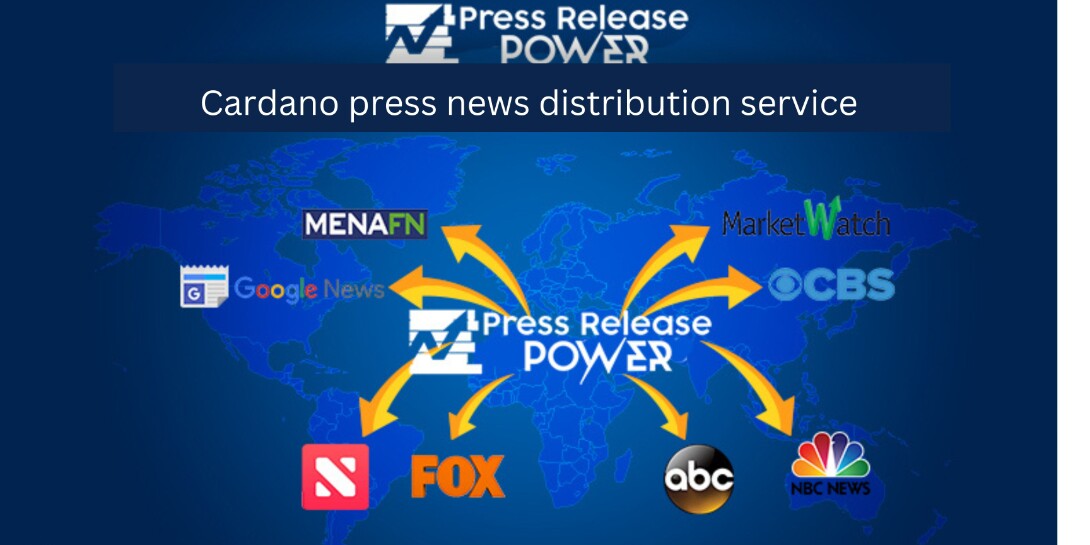How to Create an Effective Proactive Marketing Strategy
In today’s fast-paced business environment, having a proactive marketing strategy is more crucial than ever.

In today’s fast-paced business environment, having a proactive marketing strategy is more crucial than ever. Unlike reactive marketing, which responds to events and trends as they happen, proactive marketing involves anticipating market changes, customer needs, and competitive dynamics before they occur. This forward-thinking approach allows businesses to stay ahead of the curve, create more impactful campaigns, and achieve long-term success. In this article, we will explore the key components of creating an effective proactive marketing strategy and provide actionable insights to help you implement it successfully.
Understanding Proactive Marketing
Proactive marketing is a strategic approach that focuses on anticipating future market trends, customer behaviors, and potential challenges. Instead of waiting to react to competitors' moves or changes in the market, proactive marketing involves planning and executing strategies based on foresight and data. This approach aims to position your brand favorably in the market by addressing potential opportunities and threats before they fully materialize.
The primary goal of proactive marketing is to drive growth and maintain a competitive edge by staying ahead of market shifts. This involves using data, market research, and predictive analytics to inform decisions and shape marketing efforts. By being proactive, businesses can create campaigns that resonate with their target audience, build stronger customer relationships, and enhance their overall brand presence.
1. Conduct Thorough Market Research
The foundation of a proactive marketing strategy lies in understanding your market thoroughly. Conduct comprehensive market research to gather insights into industry trends, customer preferences, and competitive dynamics. Utilize various research methods, including surveys, focus groups, and industry reports, to gain a holistic view of your market landscape.
Market research helps identify emerging trends, potential opportunities, and potential threats. By staying informed about market developments, you can anticipate changes and adjust your marketing strategies accordingly. For example, if your research indicates a growing interest in sustainable products, you can proactively incorporate eco-friendly practices into your offerings and marketing messages.
2. Analyze Customer Data and Behavior
Customer data is a valuable asset for proactive marketing. By analyzing customer behavior, preferences, and purchasing patterns, you can gain insights into their needs and expectations. Use tools like customer relationship management (CRM) systems, web analytics, and social media insights to collect and analyze data.
Identify key customer segments and create detailed buyer personas based on your findings. Understanding your customers’ pain points, motivations, and preferences allows you to tailor your marketing messages and offers to meet their needs effectively. For instance, if data shows that a segment of your audience is highly engaged with mobile content, you can prioritize mobile-friendly campaigns and optimize your website for mobile users.
3. Monitor Industry Trends and Competitors
Staying updated on industry trends and competitor activities is essential for proactive marketing. Regularly monitor industry news, attend conferences, and subscribe to relevant publications to stay informed about the latest developments in your field. Additionally, keep an eye on your competitors’ strategies and tactics to identify areas where you can differentiate yourself.
Competitive analysis helps you understand your competitors’ strengths and weaknesses, allowing you to capitalize on gaps in the market. For example, if you notice that competitors are not addressing a particular customer need or pain point, you can position your brand as the solution to that problem.
4. Develop a Forward-Thinking Content Strategy
Content marketing is a crucial component of a proactive marketing strategy. Develop a forward-thinking content strategy that aligns with your brand’s goals and resonates with your target audience. Create content that addresses emerging trends, anticipates customer questions, and provides valuable insights.
Utilize various content formats, including blog posts, videos, infographics, and social media updates, to engage your audience across multiple channels. Ensure that your content is timely, relevant, and aligns with your overall marketing objectives. For instance, if you anticipate a rise in interest in a particular topic, such as remote work, create content that addresses the benefits and challenges of remote work, positioning your brand as a thought leader in that area.
5. Implement Predictive Analytics
Predictive analytics involves using historical data and statistical algorithms to forecast future trends and behaviors. By implementing predictive analytics, you can make data-driven decisions and anticipate market changes before they occur. This approach helps you identify potential opportunities, optimize your marketing efforts, and mitigate risks.
Utilize predictive analytics tools to analyze customer behavior, forecast sales trends, and assess the effectiveness of your marketing campaigns. For example, if predictive analytics indicate a growing demand for a specific product category, you can proactively adjust your inventory and marketing strategies to capitalize on the anticipated demand.
6. Set Clear Goals and KPIs
Establishing clear goals and key performance indicators (KPIs) is essential for measuring the success of your proactive marketing strategy. Define specific, measurable, achievable, relevant, and time-bound (SMART) goals that align with your overall business objectives.
Set KPIs to track progress and evaluate the effectiveness of your marketing efforts. Monitor metrics such as website traffic, conversion rates, engagement levels, and customer satisfaction to assess your strategy’s performance. Regularly review and adjust your goals and KPIs based on your findings to ensure that your marketing efforts remain aligned with your objectives.
7. Foster Innovation and Creativity
Proactive marketing requires a culture of innovation and creativity. Encourage your team to think outside the box and explore new ideas and approaches. Foster an environment where experimentation and risk-taking are encouraged, and failure is seen as a learning opportunity.
Invest in ongoing training and development to keep your team updated on the latest marketing trends and technologies. Embrace new tools and techniques that can enhance your marketing efforts and provide a competitive edge. For example, if emerging technologies such as augmented reality (AR) or artificial intelligence (AI) are gaining traction, explore how these innovations can be integrated into your marketing strategy.
8. Build Strong Relationships with Customers
Building strong relationships with customers is a key aspect of proactive marketing. Focus on delivering exceptional customer experiences and creating meaningful interactions with your audience. Engage with customers through personalized communications, responsive customer service, and loyalty programs.
Proactively seek feedback from customers and use their insights to improve your products and services. By demonstrating that you value their opinions and are committed to meeting their needs, you can strengthen customer loyalty and drive long-term success.
9. Stay Agile and Adaptable
Proactive marketing requires agility and adaptability. The business landscape is constantly evolving, and your marketing strategies must be flexible enough to respond to changes. Continuously monitor market conditions, customer preferences, and competitive dynamics to identify any shifts that may impact your strategy.
Be prepared to adjust your tactics and approach based on new information and insights. For example, if you notice a sudden change in consumer behavior or a new competitor entering the market, be ready to pivot your strategy to address these developments effectively.
10. Leverage Automation and Technology
Automation and technology can enhance the effectiveness of your proactive marketing strategy. Utilize marketing automation tools to streamline repetitive tasks, such as email campaigns, social media posts, and lead nurturing. Automation allows you to deliver timely and personalized communications to your audience, improving engagement and conversion rates.
Explore emerging technologies that can provide valuable insights and enhance your marketing efforts. For example, machine learning algorithms can analyze large datasets to identify patterns and trends, helping you make more informed decisions and optimize your marketing strategies.
11. Collaborate with Influencers and Partners
Collaborating with influencers and industry partners can amplify your proactive marketing efforts. Identify key influencers and partners who align with your brand values and target audience. Build relationships with these individuals and organizations to leverage their reach and credibility.
Influencer marketing can help you expand your brand’s visibility and connect with new audiences. Partnering with industry experts and thought leaders can enhance your credibility and provide valuable endorsements. For example, if you’re launching a new product, collaborating with influencers who have a strong following in your niche can generate buzz and drive interest.
12. Measure and Analyze Results
Regular measurement and analysis of your marketing efforts are crucial for assessing the effectiveness of your proactive strategy. Use analytics tools to track key metrics and evaluate the performance of your campaigns. Analyze data to identify what’s working well and what needs improvement.
Gather feedback from your team, customers, and other stakeholders to gain additional insights. Use this information to refine your strategy, optimize your tactics, and make data-driven decisions that drive better results.
13. Develop a Comprehensive Communication Plan
A well-defined communication plan is essential for executing your proactive marketing strategy effectively. Outline how you will communicate your brand’s message, engage with your audience, and address potential challenges. Ensure that your communication plan includes clear guidelines for messaging, tone, and channels.
Develop a crisis communication plan to address any potential issues that may arise. Being prepared to respond to challenges in a timely and effective manner helps maintain your brand’s reputation and ensures that you remain proactive in managing potential risks.
14. Evaluate and Update Your Strategy Regularly
Proactive marketing requires ongoing evaluation and updates to ensure its effectiveness. Regularly review your strategy to assess its alignment with your business goals and market conditions. Make adjustments based on new data, trends, and feedback to keep your strategy relevant and impactful.
Stay informed about industry developments and emerging best practices to incorporate new insights into your strategy. Continuously evolving your approach ensures that you remain ahead of the competition and effectively meet the needs of your target audience.
15. Celebrate Successes and Learn from Failures
Celebrate your successes and acknowledge the achievements of your marketing team. Recognize the impact of your proactive strategies and share success stories within your organization. Celebrating milestones and accomplishments helps motivate your team and reinforces the value of proactive marketing.
Equally important is learning from failures and setbacks. Analyze what went wrong, identify areas for improvement, and use these insights to refine your approach. Embracing a growth mindset and viewing challenges as learning opportunities helps you continuously enhance your proactive marketing strategy.
Final Thoughts
Creating an effective proactive marketing strategy involves anticipating market changes, understanding customer needs, and staying ahead of the competition. By conducting thorough research, analyzing data, and embracing innovation, you can develop a strategy that positions your brand favorably and drives long-term success. Implementing the key components outlined in this article will help you build a proactive marketing approach that not only responds to market trends but actively shapes them, ensuring that your business remains competitive and impactful in an ever-evolving landscape.
FAQ:
1. What is proactive marketing?
Proactive marketing is a strategic approach that involves anticipating market trends, customer behaviors, and potential challenges before they occur. Unlike reactive marketing, which responds to events as they happen, proactive marketing focuses on planning and executing strategies based on foresight and data to stay ahead of the curve and drive growth.
2. Why is proactive marketing important for businesses?
Proactive marketing is important because it allows businesses to anticipate and address market changes and customer needs before they become critical issues. This forward-thinking approach helps companies maintain a competitive edge, create impactful campaigns, and achieve long-term success by staying ahead of market trends and customer expectations.
3. How can market research contribute to a proactive marketing strategy?
Market research provides valuable insights into industry trends, customer preferences, and competitive dynamics. By conducting comprehensive market research, businesses can identify emerging trends, potential opportunities, and threats, enabling them to proactively adjust their marketing strategies and capitalize on market developments.
4. What role does customer data play in proactive marketing?
Customer data is crucial for proactive marketing as it helps businesses understand customer behavior, preferences, and purchasing patterns. Analyzing customer data allows companies to create detailed buyer personas, tailor marketing messages, and anticipate customer needs, leading to more effective and targeted marketing strategies.
5. How can predictive analytics be used in proactive marketing?
Predictive analytics uses historical data and statistical algorithms to forecast future trends and behaviors. By implementing predictive analytics, businesses can make data-driven decisions, identify potential opportunities, and optimize marketing efforts. This approach helps anticipate market changes and adjust strategies accordingly.
6. What are some effective content strategies for proactive marketing?
Effective content strategies for proactive marketing include developing content that addresses emerging trends, anticipates customer questions, and provides valuable insights. Utilizing various content formats, such as blog posts, videos, and social media updates, helps engage the audience across multiple channels and positions the brand as a thought leader.
7. How can businesses stay updated on industry trends and competitors?
Businesses can stay updated on industry trends and competitors by regularly monitoring industry news, attending conferences, and subscribing to relevant publications. Conducting competitive analysis also helps identify competitors' strategies and tactics, allowing businesses to capitalize on market gaps and differentiate themselves.
8. Why is agility important in a proactive marketing strategy?
Agility is important because the business landscape is constantly evolving. Proactive marketing requires the ability to adapt quickly to changes in market conditions, customer preferences, and competitive dynamics. Being agile allows businesses to adjust their tactics and strategies based on new information and insights.
9. How can automation and technology enhance proactive marketing efforts?
Automation and technology can enhance proactive marketing by streamlining repetitive tasks, such as email campaigns and social media posts. Utilizing marketing automation tools and emerging technologies, such as machine learning, helps optimize marketing efforts, improve efficiency, and make data-driven decisions.
10. What is the role of customer relationships in proactive marketing?
Building strong customer relationships is crucial for proactive marketing. Delivering exceptional customer experiences, engaging in personalized communications, and actively seeking feedback helps strengthen customer loyalty and drive long-term success. Proactive marketing involves addressing customer needs and concerns before they arise.
11. How can businesses measure the success of their proactive marketing strategy?
Businesses can measure the success of their proactive marketing strategy by setting clear goals and key performance indicators (KPIs). Tracking metrics such as website traffic, conversion rates, engagement levels, and customer satisfaction helps evaluate the effectiveness of marketing efforts and make data-driven adjustments.
12. What is a communication plan, and why is it important for proactive marketing?
A communication plan outlines how a business will communicate its brand message, engage with its audience, and address potential challenges. It includes guidelines for messaging, tone, and channels. A well-defined communication plan ensures consistent and effective communication, helping manage potential risks and maintain a positive brand reputation.
13. How can businesses foster innovation and creativity in proactive marketing?
Businesses can foster innovation and creativity by encouraging their team to think outside the box, experiment with new ideas, and embrace risk-taking. Providing ongoing training and development opportunities helps keep the team updated on the latest trends and technologies, promoting a culture of innovation and creativity.
14. What is the importance of regular evaluation and updates in proactive marketing?
Regular evaluation and updates are important for ensuring that a proactive marketing strategy remains relevant and effective. By continuously reviewing and refining the strategy based on new data, trends, and feedback, businesses can adapt to changing market conditions and maintain a competitive edge.
15. How can businesses leverage influencer marketing in a proactive strategy?
Businesses can leverage influencer marketing by identifying key influencers and industry partners who align with their brand values and target audience. Collaborating with influencers helps expand brand visibility, connect with new audiences, and enhance credibility. Influencer partnerships can generate buzz and drive interest in new products or initiatives.
Get in Touch
Website – https://www.webinfomatrix.com
Mobile - +91 9212306116
Whatsapp – https://call.whatsapp.com/voice/9rqVJyqSNMhpdFkKPZGYKj
Skype – shalabh.mishra
Telegram – shalabhmishra
Email - info@webinfomatrix.com
What's Your Reaction?















